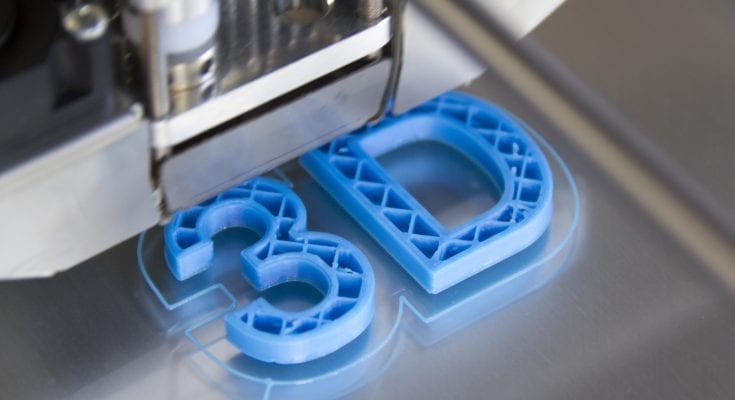You may have heard of 3D printers before, but did you know that they have uses in everything from the medical field to the automotive industry?
3D printing has come a long way since its start and the technology is now available on a smaller scale for use at home. And if you have a 3D scanner for a 3D printer, you can make everything from small objects to statues of real people.
If you want to learn more about this amazing tool, keep reading. We cover ten of the most interesting 3D printing facts and uses.
1. 3D Printing Can Create Artificial Living Tissue
3D printing has many applications in the medical field but did you know that you can layer living cells instead of plastic? It’s called bioprinting. It involves layering living cells with 3D printing technology to create living tissue.
The resulting organoids mimic organs on a smaller scale and are often used in medical research. These 3D-printed organs may be viable as an alternative to organ transplants in the near future. This could end the need for organ donors and revolutionize the medical industry.
2. You Can Make Optical Illusions
With 3D printing, you can create optical illusions and seemingly impossible shapes. These shapes change depending on the angle you look at them, boggling the mind and fooling the senses.
Some of these may be for fun or to impress your friends, but some have practical applications. For instance, you could create a puzzle to play around with or to try and trick people.
3. You Can Print Special Materials
Have you ever heard of aerogel? Aerogel is an ultralight material with a classification of around 99.8 percent air and 0.2 percent solid.
This unique material has tremendous insulation potential and can even shield humans from high heat and open flame. Aerogel has applications in biomedicine, the construction industry, and even the aerospace industry.
And it’s now possible to print this versatile material with a special type of 3D printer.
4. Scientists Are Creating Soft Robots
When most people imagine machines and robots, they envision hard metal parts and pieces. But with 3D printing technology, it’s possible to make soft robots.
So what are soft robots and why are they important?
“Soft” robots have soft, flexible parts that behave more like organic material. This makes it make it easier for robots to mimic human hand movements. Soft robots can bend, twist, and move more like living creatures.
Because of their flexible parts and internal sensors, soft robots can safely interact with humans. For instance, they can learn how to shake hands without hurting the human.
5. 3D Printers Recreate Items Used in Daily Life
You can make all kinds of things with a 3D printer including items that you use in your daily life. From pen holders and planters to funny 3D prints you can place on the wall, the possibilities are almost endless.
It’s even possible to create water filters with 3D-printed materials. According to research being conducted at Duquesne University, it’s possible to use these materials to remove fluoride from water.
6. Prototyping Is Easier and Faster
Before 3D printing, making prototypes could take days or even months to create depending on the complexity of the product. But now, many industries are using 3D printing technology to create prototypes in far less time.
Not only does this make the prototyping process faster, but it also makes it easier to make modifications to a design. This has vastly sped up the production process in many areas of manufacture.
With a 3D scanner and printer, even small businesses can create their own prototypes and launch their products.
7. You Can Print Almost Anything at Home
Thinking about creating something to use at home or even to sell? You can now do it from home as long as you have the right type of 3D printer and software.
With a 3D scanner and printer, you can scan and recreate objects you have on hand. Not only is it easy to create small objects like jewelry or toys, but it’s now possible to make instruments like guitars and violins.
The best part is that you can do much of this from your own home.
8. Product Costs Could Decrease
Because 3D printing is now more accessible and many people are learning how to make objects at home, that means product costs could go down.
With 3D printing, you simply buy a blueprint and then print the item yourself with your own materials.
And because you can make many items at home, you wouldn’t have to pay for shipping. This could make it possible for people to make what they need in less time than it would take to place an order online or go to the store.
9. Medical Devices Can Be Custom-Made
3D printing allows the creation of custom-made medical devices. These custom-fit devices work more efficiently with a person’s anatomy.
The ability to customize a design to specifically fit a person’s body makes even life-changing surgeries possible.
For instance, one patient had a condition that caused her skull to thicken and put pressure on her brain. But an Australian implant company created a skull implant with 3D printing technology. The exactly measured implant allowed the patient to recover.
10. You Can Print with More Than Plastic
Most 3D printers use plastic materials ABS and PLA. However, some specialty printers can use other types of materials such as steel, gold, and silver.
Metal printing expands the list of possible products you can create with 3D scanners and printers. Parts manufactured in the automotive and aerospace industries often have to be metal due to their strength and resistance. The ability to print these materials could make production both easier and cheaper.
Did These 3D Printing Facts Inspire You?
It’s now possible to find a relatively cheap 3D scanner online or on store shelves, meaning more people are trying this technology for themselves. And even if you’re not a designer, there is 3D modeling software out there that allows you to create almost anything from home.
If these 3D printing facts inspired you to try it, consider buying one for yourself and seeing what you can come up with.
Looking for more informational tidbits like this? Take a look at the rest of our website for interesting facts on a variety of topics from science to technology and more.


